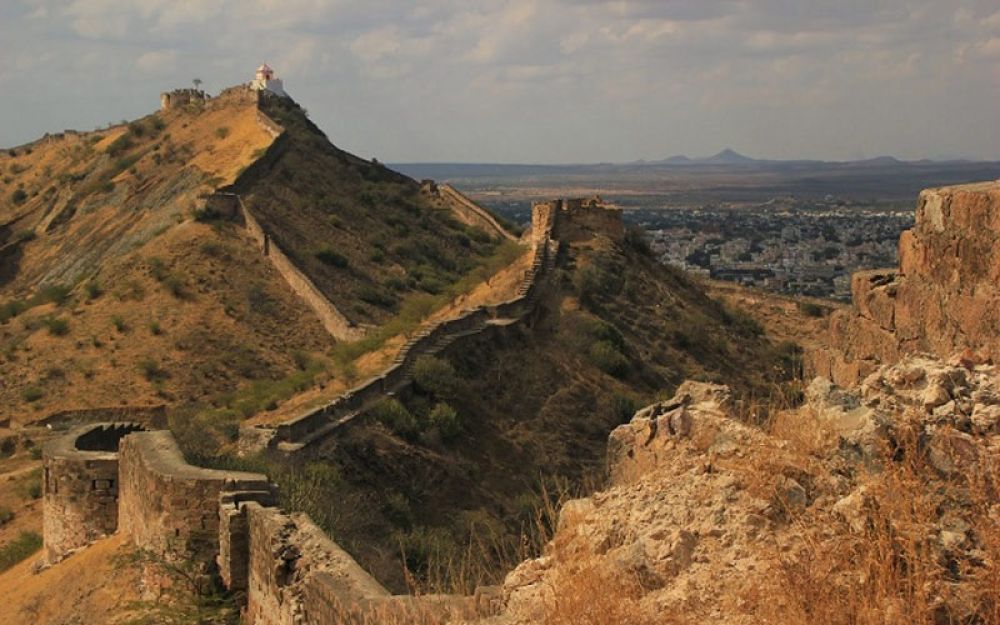

Bhujia Fort, set upon a hill called Bhujia Hill in Bhuj, Gujarat, has been a sentinel overseeing the city for centuries. The fort has withstood the test of time and has bear witness to the region's fascinating history.
The construction of Bhujia Fort dates back to the early 18th century and was built by the local rulers of the Jadeja clan for defence purposes against invading armies. It is named after the Bhujia Hill on which it stands and has since been an iconic landmark for the city of Bhuj. The fortification was strategically crucial due to its commanding view of the city below and the surrounding areas.
Throughout history, Bhujia Fort has played a pivotal role in various conflicts. It was an important site during the 1819 and 2001 earthquakes, where it suffered damages but remained an unwavering symbol of resilience for the local population.
Over the years, tourism at Bhujia Fort has transitioned from being a historical interest site to a well-frequented tourist attraction. Initially, the fort attracted history buffs and those interested in military architecture. However, as awareness and accessibility increased, more casual tourists began visiting the site to catch a glimpse of Bhuj’s panoramic views and to delve into the city's past.
Restoration efforts have been crucial in preserving the fort for posterity and encouraging tourism. These efforts are complemented by the government and local bodies who work to maintain the structure and its surroundings. Additionally, guided tours and informative signage have been introduced to enhance the visitor experience by providing historical context and stories associated with Bhujia Fort.
In recent years, there has been a noticeable shift in tourism trends at Bhujia Fort. The site has witnessed an integration of technology with history through the introduction of augmented reality (AR) apps, which provide a virtual tour of the fort, depicting what it might have looked like in its prime. This blend of the old with the new has made the historical experience more engaging for a tech-savvy generation.
Eco-tourism has also emerged as a significant trend, emphasizing the preservation of the native flora and fauna around the hill. Visitors are encouraged to engage in responsible tourism practices to ensure the sustainability of this historic site.
Furthermore, cultural events and festivals have started to be organized against the dramatic backdrop of the fort. These events aim to celebrate local customs and crafts, creating a unique connection between the tourist and the cultural heritage of the region.
When planning a visit, tourists should be aware that Bhujia Fort is open throughout the year and does not charge an entry fee. The best time to visit is during the cooler months from November to February. As the fort is situated on a hill, visitors should be prepared for a moderately challenging ascent. However, the panoramic views of the city of Bhuj and the distant Kutch desert are a rewarding experience for those who make the climb.
Whether you're a history enthusiast, a nature lover, or simply in search of a breathtaking view, Bhujia Fort offers an enriching and memorable experience that is deeply rooted in the history and culture of Gujarat.